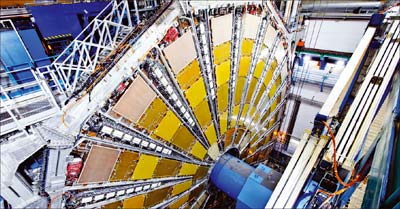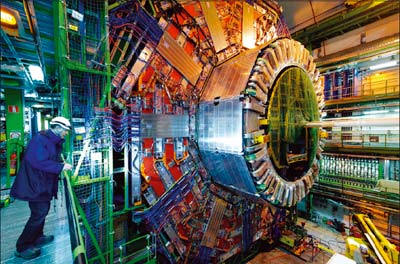
The ATLAS collaboration has made the most of the long shutdown of the LHC by undertaking a variety of maintenance, consolidation and repair work on the detector. as well as major test runs with cosmic rays. The crucial repairs included work on the cooling system for the inner detector, where vibrations of the compressor caused structural problems. The extended shutdown also allowed some schedules to be brought forward. For instance, the very forward muon chambers have been partially installed, even though this was planned for the 2009/10 shutdown. The collaboration has also undertaken several upgrades to prepare for higher luminosity, such as the replacement of optical fibres on the muon systems in preparation for higher radiation levels.

In parallel, the analysis of cosmic data collected last year has allowed the collaboration to perform detailed alignment and calibration studies, achieving a level of precision far beyond expectations for this stage of the experiment. This work is set to continue, in particular from 12 October, when the ATLAS Control Room is to be staffed round the clock. The experiment will collect cosmic data continuously until first beam appears in the LHC. During this time, the teams will study the alignment, calibration, timing and performance of the detector.
CMS has also been making the most of testing with cosmic rays. During a five-week data-taking exercise starting on 22 July, the experiment recorded more than 300 million cosmic events with the magnetic field on. This large data-set is being used to improve further the alignment, calibration and performance of the various sub-detectors in the run up to proton–proton collisions.
As with the other experiments, the shutdown period provided the opportunity for consolidation work on the detector. One of the most important items in CMS was the complete refurbishment of the cooling system for the tracker. The shutdown also gave the collaboration a chance to install the final sub-detector, the pre-shower, which consists of a lead–silicon “sandwich” with silicon-strip sensors only 2 mm wide. The pre-shower, which sits in front of the endcap calorimeters, can pinpoint the position of photons more accurately than the larger crystal detectors in the endcaps. This will allow a distinction to be made between two low-energy photons and one high-energy photon – crucial for trying to spot certain kinds of Higgs-boson decay.








